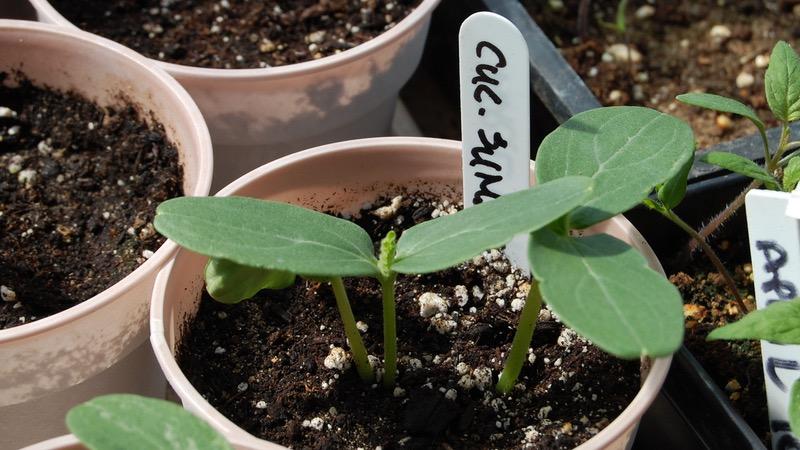Some people associate summertime with barbecue season. But for a growing number of vegetarians, vegans and those simply seeking to curtail their meat consumption, that image no longer works.
When asked to conjure up a vegetarian picnic, we think not of lab-grown meats but of plants. We are gardeners, after all.
Tomatoes and fruit are an obvious starting point for most traditionalists, but there is only one plant “food group” that makes a worthy meat substitute: pulses. Of those, beans are our favourite. A good bean burger or bean salad will make you friends at any summer picnic.

Point of clarification: All pulses are legumes, but not all legumes are pulses. Unlike peanuts, soybeans, and fresh peas and beans, pulses are the dried edible seed within a pod, and unlike peanuts and soybeans, they tend to be low in fat and very high in protein and fibre.
Looking at pulses alone leaves you with dried beans, peas, lentils and chickpeas. The first two grow particularly well in southern Ontario, while most lentils and chickpeas are grown in the Prairies. It is important to note that Canada is the largest exporter of pulses in the world. There is a sweet spot for chickpeas in southern Saskatchewan; with their deep roots, chickpeas prefer drier soils and cooler temperatures. Lentil production, meanwhile, is broader, stretching into southern Manitoba, while the remainder of dried beans are grown mostly in southern Ontario and Quebec, where soils are rich and summers slightly hotter.

There are a lot of great environmental reasons why we should eat more pulses. For starters, all legumes fix nitrogen from the atmosphere, eliminating the need for synthetic nitrogen fertilizer. They are also very nutrient dense. A 1972 study found that per acre of production, legumes produce 4.2 times more protein than meat. When you consider that livestock production is one of the principal drivers of deforestation around the world, there is a compelling argument to be made for increasing your bean consumption.
You would be doing yourself a favour, as well. Not only are beans a lean source of protein that is high in fibre, but they’ve also been shown to reduce the risk of developing diabetes and heart disease by lowering cholesterol. Research has also found that the darker the bean, the more antioxidants could generally be found in its skin pigments—antioxidants that destroy free radicals linked to heart disease, cancer and aging. Black beans have the highest concentration, followed by red, brown, yellow and white beans.
Many gardeners are starting to grow their own because beans are a protein source that stores well and it is a good way to get your hands on rare varieties. Two popular but not quite mainstream bean varieties are orca beans and Thibodeau. Orcas are named for their pretty black-and-white contrast, which makes them look like the whale, and Thibodeau is a popular heirloom from Quebec that yields well and dries down on the plant. Yield is an important consideration, and many gardeners are surprised to find out just how much of their garden can be consumed to produce only a few pounds of beans. Remember, though, it is dry mass, unlike tomatoes and squash, which contain a lot of water. The other challenge for the home gardener is shelling. While small-scale processing equipment is available from specialty suppliers, most home growers we talk to shell them out by hand into a bucket, with a beer or cup of tea by their side.
If you’re thinking of giving this a try, you can order unique varieties or start with the dried beans you have in your cupboard. Beans are seeds, after all. Farmers usually wait to plant beans, since they mature more quickly than corn and germinate in a soil temperature of 15°C (59°F). We do not recommend starting beans indoors and transplanting; they grow quickly enough as it is. Direct-sow in rich, well-drained soil.
And if the thought of shelling your beans by hand sounds like too much work—which, frankly, it does even to us—Ben has started up a business to help you out. Cullen’s Foods, Ontario grown and certified organic, is available in a growing number of grocery stores.
Growing beans for business, “commercially,” was a steep learning curve. First, there was finding organic growers who were willing to take a bit of a risk. Unlike corn and soy, there hasn’t been the same investment in kidney bean, navy bean and black bean genetics to provide a reliable crop. Not that it really matters: Under the organic regime, genetically modified crops are not allowed. All organic foods are, by default, GMO-free.

Then there is growing organically. Obviously, herbicides are also banned for organic production, which means that after planting, the grower tills between the rows without driving over the beans until the bean plants form a canopy to outcompete weeds. Some careful tractor work is involved.
At the end of the season, conventional bean growers typically burn down the crop, using a herbicide such as glyphosate (Roundup), killing the beans so that they can dry more quickly. Spraying a crop with glyphosate is out of the question for organic growers. Instead, they wait until frost has killed the plants and “dry down” can begin. It makes for a later harvest, with the last year’s crop not coming off until early December.
Quality control for organic beans occurs after the beans are harvested and are at the “cleaners.” Two to three passes through a mechanical sorter culls out small or broken beans, as well as various field debris. A mechanical sorter is like a stack of moving sieves, sort of like the screens you might have had in your sandbox as a kid. Then the crop passes through a “laser-eye” colour sorter, which kicks out beans that have grown mouldy.
The final pass is through a polisher, which is an auger that forces the beans through a granular medium, such as corn cob grit, to polish any “dirt tags” or green stains from the harvest. Because organic fields typically have their share of weed pressure by harvest, green staining can occur when the green weeds pass through the combine with lighter-coloured beans, smudging off the chlorophyll.

Once the beans are “clean,” they are delivered to the dryer, where warm air circulates through them, bringing moisture down to between 15 and 18 percent, from its harvest level of 22 percent. Beans dried using this method can last for years when stored in a dry, dark cupboard or cold cellar.
There you have it. From there, a bean can go into a bag to be sold as dried, or off to the cannery to get precooked for extended shelf life. Grow them yourself or shop at the store—now you can tuck into a classic Canadian picnic favourite knowing the whole story.
Mark Cullen is an expert gardener, author, broadcaster and tree advocate
and holds the Order of Canada. His son, Ben, is a fourth-generation
urban gardener and a graduate of the University of Guelph and Dalhousie
University in Halifax. Follow them at markcullen.com, @MarkCullen4
(Twitter) and @markcullengardening (Facebook) and look for their latest book, Escape to Reality.
Follow them at markcullen.com, @MarkCullen4, facebook.com/markcullengardening and biweekly on Global TV’s national morning show, The Morning Show.













